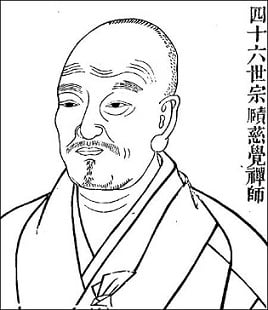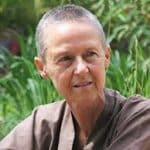Cijiao’s Rules for Meditation
If you wish to train for the wisdom of enlightened being, you must first arouse the heart of great compassion and take the all-embracing (bodhisattva)-vow: to become versed in the practice of samadhi and liberate all beings, so you do not solely seek freedom for yourself.
Only then must you let go of all appearances, let all phenomena rest, so that your body and mind can be one ‘just as it is-ness’ and no gap exists between activity and stillness.
Take food and drink in moderation, neither too much nor too little. Regulate your sleep, neither too long nor too short. When you are going to meditate, choose a quiet restful spot and put a thick cushion down. Loosen up your belt and clothing, and assume the proper posture and composure.
Then fold your legs together crossed into a knot (the Lotus-position). First let the right foot rest on top of the left thigh and the left foot on the right thigh. To cross just the one leg is also all right, then only put the left foot on top of the right thigh. Next, rest the right hand on the left foot and the left hand in the palm of the right one, with the thumbs touching and propping each other up.

Slowly rock back and forth, left and right. Then sit steadily up straight, without leaning to left or right, backward or forward. The vertebrae of the lower back, spine and neck should be aligned with the top of the head and hold each other up, your shape like a stupa. But you must not rise up your body too much so your energy gets excited.
Keep your ears in line with the shoulders and your nose in line with your navel. Hold your tongue pressed against your top teeth, with your lips and teeth together. Your eyes must be slightly open, to avoid dozing or falling asleep. For finding meditative stability (ch’an ting), this is the most powerful. In the past, eminent monks who practiced sitting in meditation, always have been sitting with open eyes.
Master Fa-yun Yuan-tong reprimanded those meditating with their eyes closed; he called it “(sitting in) a dark mountain-ghost cave”. This has deep meaning, as experienced meditators know.
After your posture is settled and your breath regulated, you let your lower abdomen extend in a relaxed way. Do not get involved in thoughts about good or bad. When a thought arises, be aware of it; in awareness it is let go off. When you forget all reasoning for a long time, you naturally become one. This is the art of meditation.
I venture to say that this sitting in meditation is the Dharma-gate to peace and joy. That many people become ill, is because they do not use their mind with careful attention. When you do sit with the right mind, the four elements naturally come to peace, your spirits become alive and bright, right thought clearly stands out. Then the flavour of the Dharma safeguards your spirit, which will be serene, lucid and joyful.
Someone who has clarified existence (i.e.: what we are), can be called a dragon that has found water, or a tiger that reached the (free) mountains. Those who still have to do so – keep letting the wind blow on the fire. Much effort is not needed. Merely see and follow the true heart and you surely will not be deceived.
But when the Way is lofty, there are plenty of pitfalls (lit: demons); all manner of things attract and offend. But when we keep right mindfulness present, this all cannot hold us back.
As the Shurangama-Sutra, the Tiantai writings about “stopping and looking”, and Master Gui Feng’s How to Practice Realisation, are all concerned with exposing hindrances, they are a ‘must know’ for those who are not well prepared.
When you wish to arise from meditation, slowly move the body and carefully get up, not abruptly. After coming out of meditation and getting up, do at all times what is beneficial; protect and maintain the power of stillness as if you protect your baby child. This way you can perfect the power of meditative stability.
The grounded stillness of meditation is a most urgent matter. If you do not practice this quiet sitting, anxiety enters the serenity and you will end up in a daze. So, who searches the jewel must still the waves; in restless waters it is hard to find. Quiet stability settles and clarifies the water so that the jewel of the heart-mind will naturally show itself.
Therefore the Perfect Enlightenment Sutra says: “Unimpeded pure wisdom entirely depends on the presence of the grounded stillness of meditation.” The Lotus Sutra says: “Settle in an enclosed place and harmonize your heart-and-mind so that it is still and immovable as the Central Mountain.”
For this knowledge of transcending the ordinary as well as the sacred, you must put to rest cause and effect; to die sitting or standing, you must rely on the power of the unshakable still mind. Even if you give your whole life to it, you may still not be successful, let alone if you waste your time! How will you deal with karma? Therefore the ancients said: If you do not cherish the power of grounded stillness, you willingly yield to death, living uselessly with your eyes closed, drifting along.
I hope that all you friends on the path of Zen, will read this over and again, so that you and others may realize true awakening.
Rules for meditation by master Cijiao (Compassionate Awakening) from Chang-lu (written 1103). Date of birth is not known, he was ordained in 1089. Zenmaster Dogen used parts of Cijao’s Rules for meditation for his Zazen for anyone anywhere (Fukanzazengi).


